Getting cut or poked by fish can be disastrous for your health! In this guide, I'll reveal to you why that is the case and what I do to prevent it from happening in the first place, steps taken when it does inevitably happen and what to tell your doctor if you suspect the worst.
Disease Is Introduced When Cut or Poked By Fish
While our coast is certainly bountiful with a multitude of fishing — ranging from largemouth bass to yellowfin tuna and everything between — it also has its share of diseases. Yes, our quality of life is a lot better now than when things like malaria and tuberculosis ran unchecked through entire townships. But this is still Planet Earth, and here life is inherently hard!
Out there in the Sportsman's Paradise there are diseases like vibrio vulnificus and fish-handler's disease to ruin your day, or worse. These two life-ending infections are what the focus of this guide are about, but what you'll discover here is an overall precaution to maintaining your health when enjoying Louisiana's popular pastime of fishing.
What time of year do we usually see these diseases?
Warmer months are when you can expect to encounter these illnesses, but I still recommend taking any of the steps mentioned below whenever cut or poked by a fish, even during winter when it's coldest.
Warning!
I am not a medical professional and the advice below should be taken with a grain of salt. With that disclaimer out of the way, you should know the below steps are what I have used for decades and it's kept me healthy and kicking that entire time.
Some people run to the emergency room at the drop of a hat and, if that person is you, then I recommend going straight there instead.
What To Do If You Are Cut or Poked By Fish
If you think you need professional medical help, then you should seek it. Go to the emergency room if there is a shadow of a doubt the situation could be that dire.
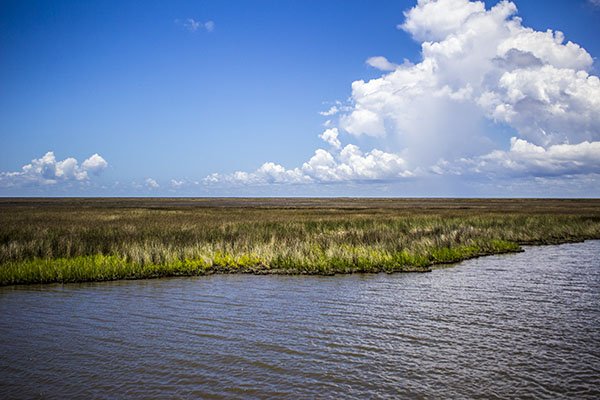
Do you see an urgent care clinic out here?
With that said, typically when we go fishing in Louisiana we are in remote locations far from the conveniences of civilization. Look at a map of Louisiana's vast coast at a place such as East Biloxi Marsh and you won't see an emergency room or urgent care clinic readily available.
Even if you ended the fishing trip right then and there, you still have a long distance to travel to medical help. During that time you may as well take the following steps when cut or poked by a fish:
Clean The Wound
I like to use a bleach/water mix or hydrogen peroxide to immediately flush and clean the wound. Yes, some medical professionals and Internet experts would recommend using soap and warm water, but the problem is that there is no clean, running water in the marsh. Duh.
By the way, the Amazon links in the guide are products that I actually keep in my boat and have used in the past. These are affiliate links and I do get a small commission to keep this website running, at no additional cost to you. On to the next step:
Stop The Bleeding
After the wound is nice and clean, I'll apply pressure with some gauze or a clean towel to stop the bleeding. This isn't life-threatening, arterial bleeding or anything very serious like that. Remember, this is just a cut or poke from a fish.
Once the bleeding slows down from being cut or poked by fish I'll seal the wound. If it takes a little longer to stop, I'll wrap it with gauze and ace-wrap.
Seal The Wound
This could be as easy as applying a generic band-aid, but I personally prefer to use a product called New Skin. It will seal the wound, help clean it and keep additional water and bacteria from entering.
If you don't take time to stop the bleeding, then New Skin won't be able to coat and seal the wound. It'll just mix with the blood and be ineffective.
So that's what I do to minimize on-the-water infections and keep confidently fishing. When I get home, I'll further clean the wound and take a shower.
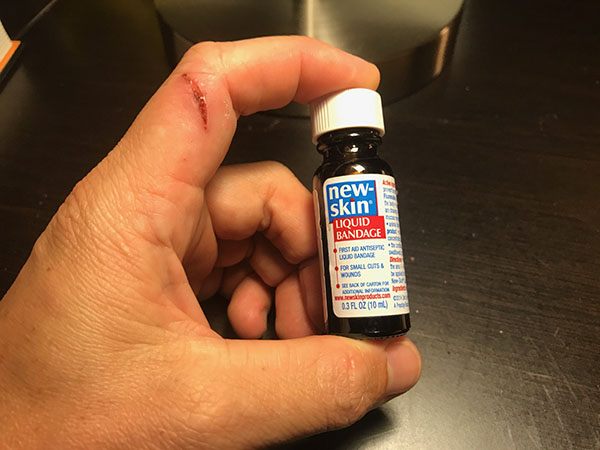
Here you can see the product I use, as well as its fresh application on an accidental cut from a fillet knife while cleaning redfish.
How You Can Get Cut or Poked By Fish
If it's not obvious, fish and pretty much anything living in the water are basically swimming butcher's blocks waiting to deliver a life-threatening nick. Everything ranging from oyster shells to trout teeth are waiting for the opportunity at a little payback. Ha ha ha!
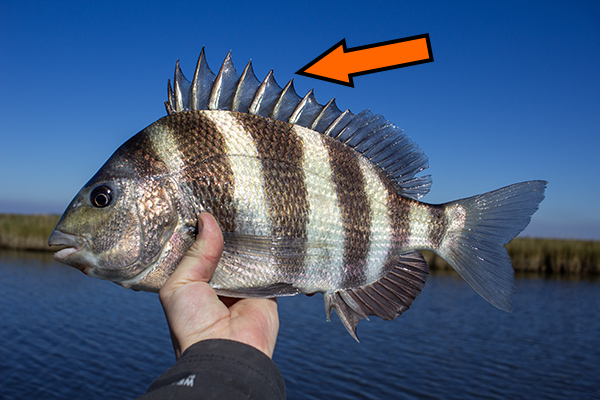
The spines on a sheepshead could be a bad day, especially if dropped on your feet.
Even shrimp with their tiny horns can deliver a jab powerful enough for infection to become an opportunity. I could argue that it's another reason to not use live bait but, to be fair, I fished with live bait for years and never had an infection as well as numerous anglers I know.
There's also pokes from hooks and cuts from fillet knives to worry about as well. So it's good to be prepared.
Prevention Is The Key
The best thing you can do is prevent being cut or poked by fish from happening in the first place. That's one reason why I wear gloves when fishing, with the main reason being protection from the sun. But there's been more than one occasion when the sun gloves spared me a cut or poke from fish or tackle.
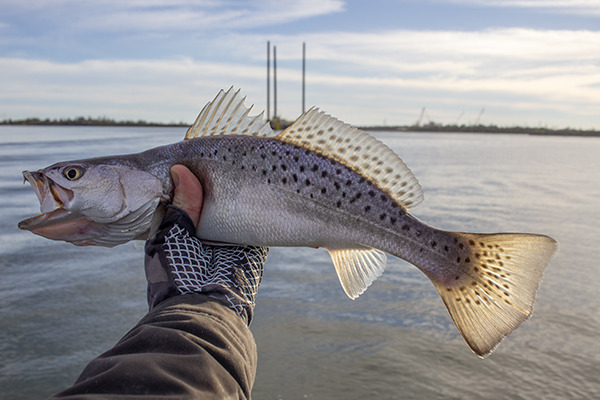
The next thing you can do is handle fish more securely. Something to grip them with, usually by their mouth, is a good start. That's why use a Boga Grip, especially when handling triple tail, because they have really sharp spines on their gills. These have gotten me once or twice, so now I use that Boga to handle them.
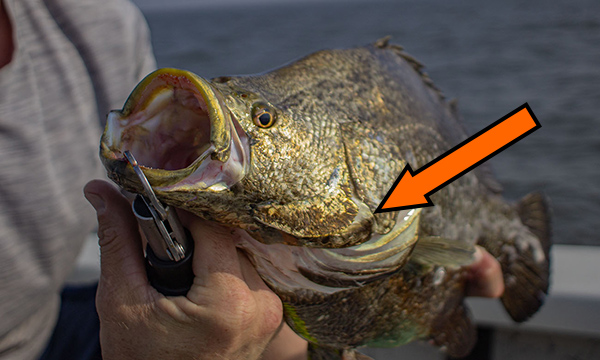
The worst way to be cut or poked by fish in Louisiana's inshore waters would be some kind of saltwater catfish, such as a hardhead or sail cat. For these I recommend using a long catfish flipper, utilizing the technique in this guide. The best way to handle them is to not!
While the wire flippers are cheap, you should consider using the longer kind that floats, like what you see below. These are easily found at local tackle stores across Louisiana's coast (with mine being Gus' Tackle in Slidell).
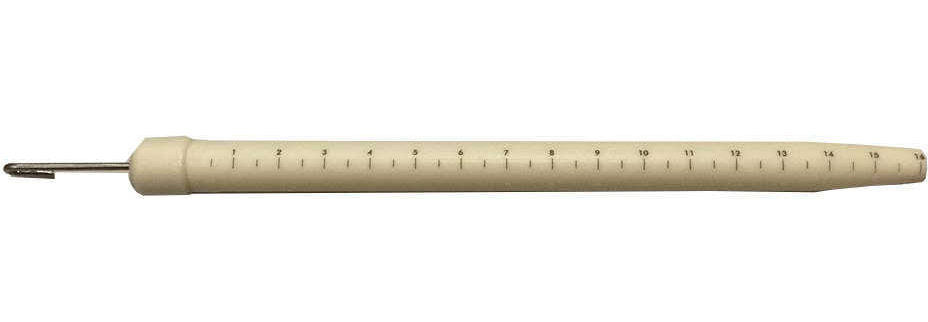
Better Safe Than Sorry
If you're not sure, go to the doctor. When you do, make it as clear as possible what happened: you were cut or poked by a fish, or fishing tackle (or whatever) and that your concern is a water-borne disease like vibrio vulnificus or fish-handler's disease.
The reason why you want to do be clear is that most doctors deal only with domestic (and sometimes trivial), suburbanite injuries. The key to treating flesh-eating bacteria is to treat it as soon as possible. The sooner the better. This is not something you wait on.
If you're not sure, that very thing happened to this guy here:
"When he went to a hospital the night he discovered the infection, he was put on antibiotics, but the medical staff didn’t know what he was suffering from. After going to his family doctor only to find a similar result, he returned to the hospital the next morning to see an infectious-disease specialist."
Don't be that guy. Consider that you are fighting for your quality of life, your limbs or your very life itself. Do not screw around with this emergency!
Over To You
What do you do when cut or poked by fish? It seems every year we see news of someone falling prey to vibrio or some other disease, and any extra advice or personal experience that can help folks is appreciated here. So, if you have any to offer, then please add it below in the comments section.
Tight lines, and thank you for visiting my website!

Thank you for focusing on this potentially significant health hazard when fishing. I view this equally important as wearing a life vest. Both can save lives. I like the homebrewed remedies as immediate palliative care that everyone can carry or practice while out on the boat. I’ve ordered the items you mention from Amazon with the thought being I would like to have a cut kit separate from my First Aid kit. Thanks Devin!
Great article and advice. Suffered my first stingray stick 3 weeks ago. I tense pain and nothing but a small basic first aid on board made for a bad day. Didn’t wanna ruin the clients trip, so I tried to play it off as no big deal. They continued fishing another 30 minutes or so while I rinsed it in the lake and applied pressure with the slimy nasty rag I had been using all morning to wipe my hand 🤦🏻♂️. Made it back to the marina to find them closed so cleaned the days catch without the warm water trick before loading the boat and making it home 4* hours post stick to appropriately clean and bandage the wound. Woke to pretty good infection already set in, Dr visit resulted in being placed on 2 different antibiotics, x-Ray to ensure no spine fragments left in the wound. Follow up with wound care specialist the next day, 1 antibiotic swapped and wound cleaned of already dead skin around it. Infection now cleared up and hopefully last wound care visit tomorrow, however it’s still not 100% cleared!
Exactly, I’ve had plenty catfish pokes but endured probably the worst pain ever on the water when a stingray barb went through my pinky and then pulled back out backwards when the fish slipped before I could cut the barb off. Sure wish I would have thought of the hot water from the outboard as it was 4* hours before I got to somewhere with hot running water to neutralize the venom. 3 weeks in and still not healed!
That’s great advice, thank you for sharing!
Thank you!
Yeah, I’m definitely pinning this comment. Wise words from the master. Thanks for taking time to comment, I appreciate it!
Great advice Capt. I keep those same supplies on hand at all times. Since being on blood thinners now I am even more aware to avoid the injuries in the first place. The Jus Grab It Glove my best friend on the water. It cuts down on the slime and gets you back in the game quicker with the bonus of protecting from cuts. I also pack extra gauze pads and lots of ace-stretch wraps just in case now too.
For catfish the flipper works great, but most of the time I go for my stainless steel crab tongs. Great for holding catfish especially when they are hooked in a way that it is tough to get the hook out. It also beats flipping a 5# sailcat. There is also the added bonus of giving him a slit to the belly before being tossed back. Crabs gotta eat too.
A tip for stingray pokes. Even the slightest cut from one without the barb sticking in you will still cause pain on a level that can cause insanity. It is probably the most sever pain you will ever feel. Best thing to kill the pain is to get the wound under as hot of water as you can and keep it there. The pee stream for your outboard can help till you can get to hot water on land. You really should go to the ER as soon as you can.
Great info as usual!
Good advice. I carry Adolphs meat tenderizer with me for jellyfish stings and other uses. I was stuck by a gafftop catfish spine a few years ago. Not wanting to spend hours in the ER (my hand swelled up instantly), I asked a local waterman who made and sold fish traps what to do. He told me to make a paste with the Adolphs, wrap my hand in gauze and the poison would be drawn out of my hand by morning. Sure enough, by morning, the swelling had gone done, there was no pain and I had no lasting effects.